🌅 Camp Under the Stars at Ussangoda Beach! 🌊
Looking for a one-of-a-kind camping experience? Ussangoda Beach offers breathtaking coastal views, wild adventures, and a touch of mystery with its unique red soil and geological wonders. Pitch your tent, explore nature, and witness an unforgettable sunset!
Looking for an unforgettable camping adventure in Sri Lanka?
If you love nature, adventure, and breathtaking landscapes, Ussangoda Beach is the perfect getaway! Located on Sri Lanka’s stunning south coast, this hidden gem offers a one-of-a-kind beach camping experience. It’s not just a beach—it’s a protected national park rich in geological wonders, wildlife, and fascinating history.
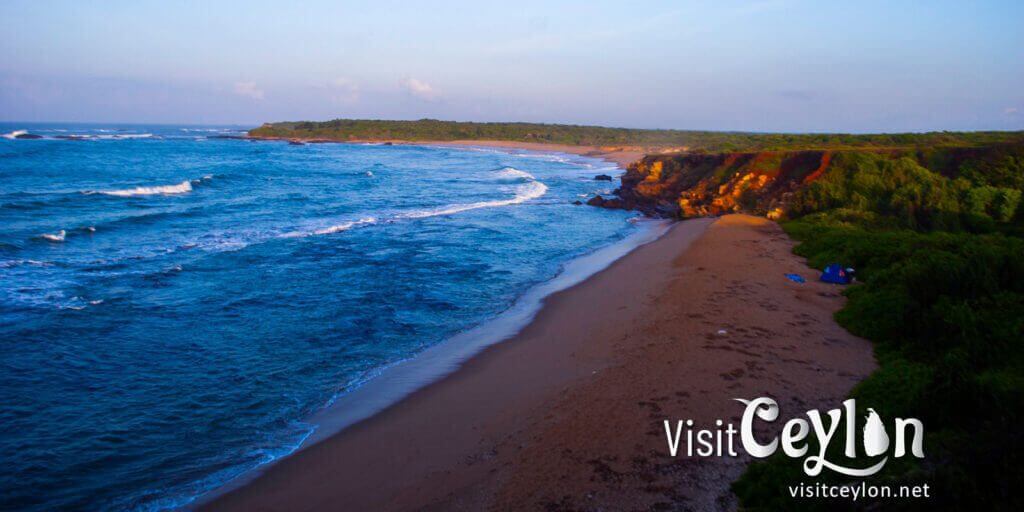
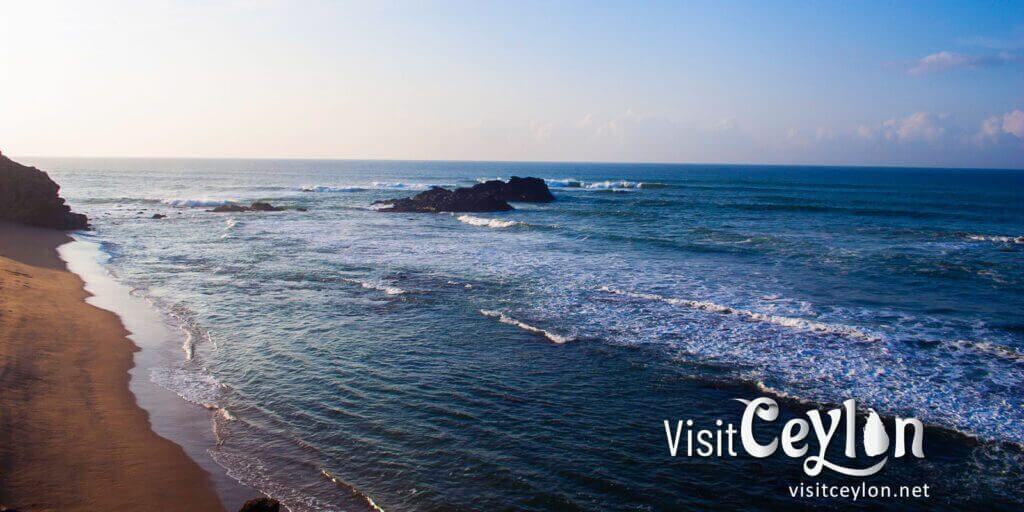
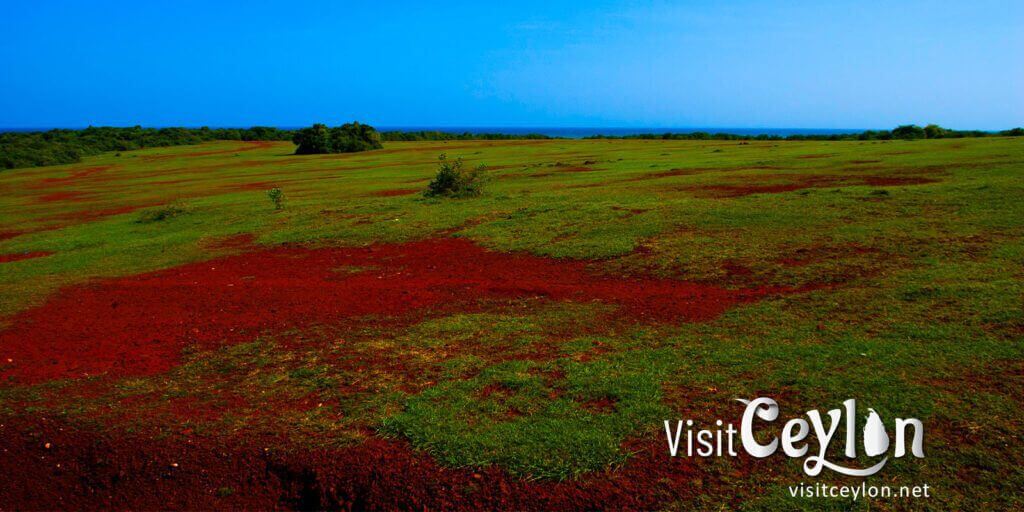
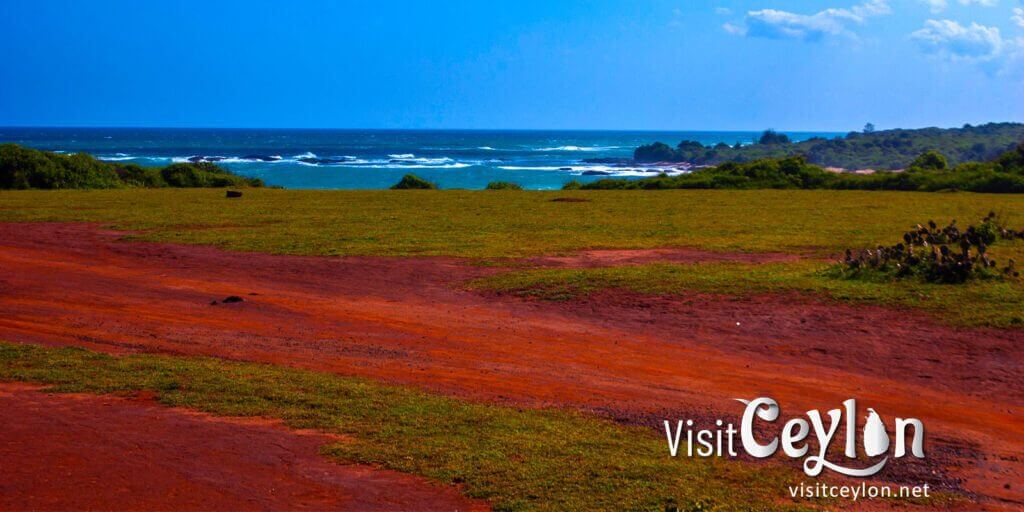
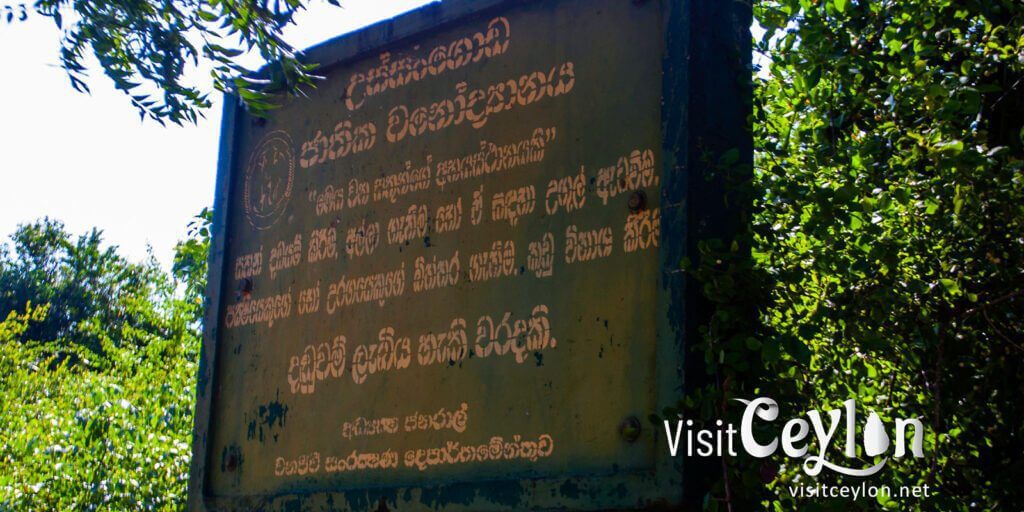
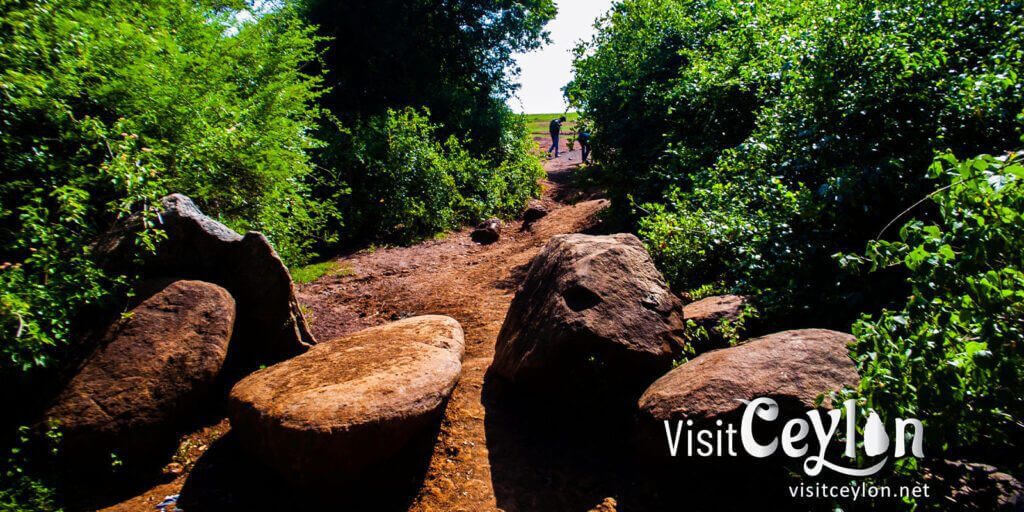
Why Visit Ussangoda Beach?
Unique Reddish Soil & Scenic Views – A rare sight in Sri Lanka!
- Perfect for Wild Camping – Set up your tent right by the ocean.
- Safe Swimming Spot – Coral barriers make the waters calmer.
- Unspoiled Natural Beauty – A paradise for photographers & nature lovers.
- Fascinating History & Geology – Linked to meteors and prehistoric humans.
Ussangoda Beach is part of Ussangoda National Park, Sri Lanka’s 21st national park, which is protected for its unique environmental and archaeological value. It also falls within the Rathnagolla Forest, which is government-owned and managed by the Department of Forest.
🏝 My First Visit to This Hidden Beach
The first time I came here, the sun was already setting and darkness was creeping in. Luckily, I had friends living nearby who guided me straight to this amazing camping spot. Without them, I probably would have missed it entirely in the dark.
They even showed me their own secret route to reach the beach — no need to enter the national park at all.
📅 Round Two
About a month later, I returned — this time all by myself. This time, I decided to go through the main entrance of the national park, but to my surprise, there was no guard and no ticket was needed. I arrived much earlier in the day, maybe around midday, with plenty of time to explore.
I wandered around, trying to find the exact same camping spot from my first trip. I’ll mark the location so it’s easier for anyone else to find. 📍
🌊 Why I Love This Beach
Crowds? Hardly ever. Sometimes couples wander in during the day, and a few people come to watch the sunset… but most of the time, it’s just me, the sand, and the waves.
It’s peaceful, safe, and absolutely perfect for camping.
Honestly — this is the best beach I’ve ever camped at. 💙
How to Get to Ussangoda Beach
📍 Location: Ussangoda Beach is about 2.5 km from Ussangoda Junction in the Hambantota district.
🚗 By Car:
- From Hambantota or Tangalle – 40 40-minute drive. (just follow the given Google map location)
🚆 By Train:
- Take a train from Colombo Fort to Matara (3-4 hours).
- Get off at Beliatta Station (the closest stop to Ussangoda).
- From Beliatta, take a bus or tuk-tuk (30-40 minutes) to Ussangoda Beach.
🚌 By Bus:
- From Beliatta, take a bus towards Tangalle or Hambantota.
- If you take a Tangalle bus, switch to another bus heading toward Hambantota.
- Get off at Ussangoda Junction and walk or take a tuk-tuk for the last 2.5 km.
💡 Travel Tip: Bring enough water, snacks, and sunscreen, and check transport schedules in advance.
💸 Budget-Friendly Adventures from the Past
When I visited this amazing spot, I didn’t have a job yet and was still studying 📚. Money was tight — so my trips had to be super budget-friendly.
Back then, a trip like this could be done for about Rs. 2000 or less — way cheaper than today’s prices, which have now tripled! 😮💰
I travelled all the way from Colombo by train and bus 🚆🚌. From the main road, I had to walk about 2 km under the scorching midday sun — no shade anywhere 🌞🔥 — carrying all my camping gear on my back. It was tough and honestly, a bit miserable.
But I had no choice — I couldn’t afford even a tuk-tuk ride for that short distance.
The only relief was a tiny shop where I could buy a cool drink 🥤 before continuing the walk. Somehow, I managed to reach the campsite — tired, sweaty, but happy to be there.
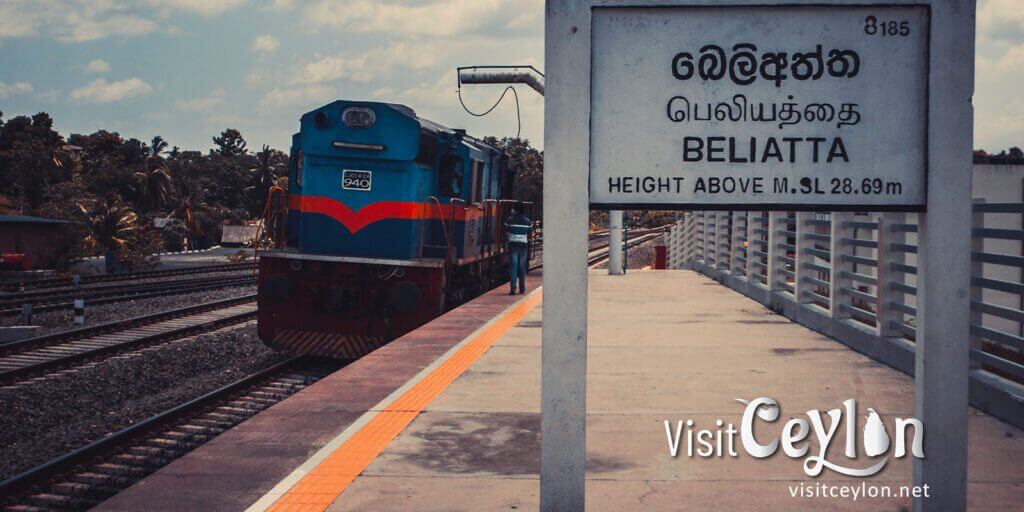
Camping at Ussangoda Beach
🏕️ Camping: There are two main camping spots near the beach:
- Primary location: Near the viewpoint (best spot, arrive early!).
- Secondary location: A little further away, but still scenic.
🔥 Bonfire: Firewood isn’t available at the campsite, so collect some from the park before setting up your tent. Do not cut down trees or plants. Just collect the dry wood for a bonfire.
🌊 Swimming: The beach near the viewpoint is safer due to coral barriers.
📷 Photography & Sightseeing: The dramatic red soil, ocean views, and sunrise/sunset scenes make for incredible pictures.
🐘 Wildlife: Keep an eye out—wild elephants from Kalametiya Park have been spotted in the area!
🏝 The Most Peaceful Beach I’ve Ever Seen
I’ve been to many beaches, but this one is something else — calm, quiet, and beautifully isolated. The campsite is tucked away, surrounded by a little jungle 🌿, giving you privacy and a feeling of being far from the world.
🌞 Daytime:
Even at midday, the heat was manageable thanks to the cool sea breeze 🌬. The beach here is perfect for swimming because it’s protected by a coral boundary 🪸. No big waves crash in, so the water is calm and safe.
⚠️ Just be careful — if you accidentally step on coral, you might get hurt… and more importantly, please don’t hurt the coral either. They’re fragile and precious.
If you open your eyes underwater 👀💦, you’ll be amazed — the coral looks even more stunning up close. I could see them clearly even from above the water, and yes… I couldn’t resist touching them gently.
🌅 Evening:
When the sun starts to set, the entire place transforms — everything turns shades of deep red. The sand, the sea, the sky… It’s like stepping into a painting. I honestly can’t put the beauty of that moment into words.
🌌 Night:
At night, the sky was so clear I could see what felt like every single star in the galaxy ✨. It was peaceful, silent… just me and the universe.
🦀 The Only Problem — Crabs:
When I was making dinner, dozens of little crabs came wandering around. They’re harmless and don’t bite — just small, curious creatures. But there were so many that I joked they might carry me to the sea if I wasn’t careful 🤣.
I even tried lying on the sand without my tent for a while, but the crabs made me a bit nervous, so I retreated back inside.
If you plan to camp here, be prepared for lots of crab visitors.
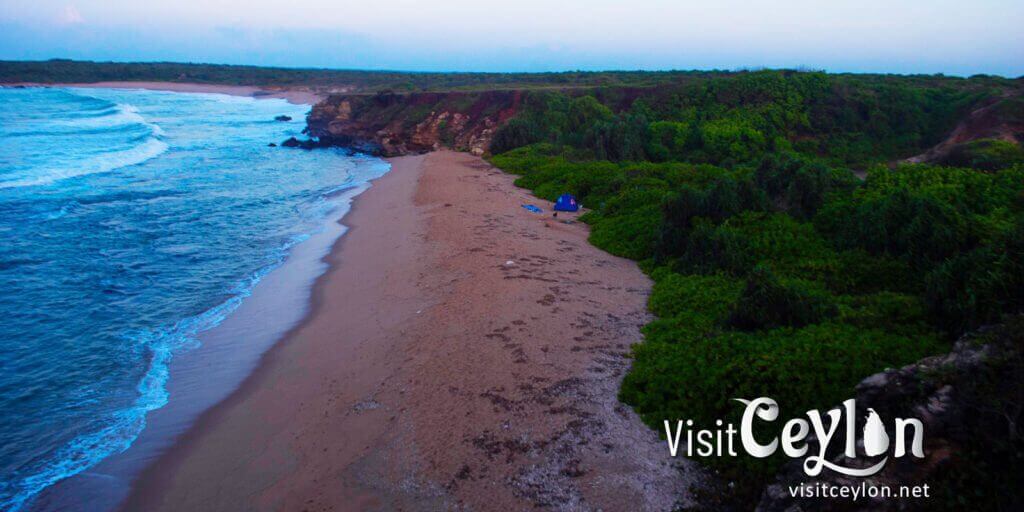
Exploring Ussangoda’s Geological & Historical Wonders
🌋 Ussangoda – Land of Legends and Mystery
Ussangoda is one of Sri Lanka’s most unique landscapes — known for its unusual soil composition, rare vegetation, and dramatic coastal location.
🔴 Unique Soil & Geological Mystery
The land here is covered with brick-red, rock-hard soil found nowhere else in the region. In many places, especially along the sea-facing cliffs, you can see layered rock formations with distinct color bands.
Many believe this strange terrain is the result of a meteor impact. The theory comes from:
- The soil’s extreme hardness and reddish hue
- Signs of heat damage on some rocks and soil layers (suggesting exposure to extreme temperatures)
- A high concentration of iron and other minerals — in fact, magnets can attract some of the rock debris here 🧲
Despite these claims, no conclusive scientific study has confirmed the meteor theory.
Interestingly, Ussangoda lies not far from Miniha Gal Kanda, an archaeological site where evidence of prehistoric human life has been discovered.
Legends & Local Beliefs
Ussangoda isn’t just about geology — it’s deeply tied to Sri Lankan folklore. Local tradition considers it a sacred or forbidden land.
Some of the most popular legends include:
- The Ground of Mangara – the local demi-god said to reside here
- Ravana’s Landing Strip – According to Hindu Puranas, this was one of the landing areas for King Ravana’s mythical Pushpaka Vimana (flying chariot)
🏞 Modern Conservation
In 2010, Ussangoda National Park was officially established to protect its biological, archaeological, and geographical treasures.
The park lies just west of Kalametiya Wildlife Sanctuary, making the area a rich blend of cultural history and natural beauty.
Respect Nature & Leave No Trace
Before leaving, be sure to clean up. There are trash bins about 500m from the beach—let’s help keep this beautiful spot unspoiled for future visitors!
🌿 Take only memories, leave only footprints! 🌿
Final Thoughts
Ussangoda Beach is more than just a camping spot—it’s an experience. From its rare landscape to its peaceful setting, it’s the perfect place to relax, explore, and reconnect with nature. Whether you’re travelling solo or with friends, this trip will leave you with unforgettable memories.
📍 Plan your adventure today and explore the magic of Ussangoda Beach! 🏕️🌊
Ussangoda Beach live weather update 🛰️

- Temperature
- Precipitation
- Rain Chance
- Wind
- Humidity
- Pressure
💬 Enjoyed this post? Share it with your fellow travellers and visit visitceylon.net for more amazing Sri Lankan travel guides!
Plan Your Adventure: Explore Our Interactive Map!
To make your journey even easier, check out our interactive map, where we’ve marked all these amazing destinations. Use it to plan your trip and discover more hidden gems in Sri Lanka!
To plan your trip with public transportation in Sri Lanka, visit Sri Lanka Railways for train schedules.
Visit our Advanced Sri Lanka Trekking Map
Ussangoda Trekking GPS coordinates 🎒🏕️📸
For your reference, I will put the Ussangoda beach camping route GPS coordinates in GPX format.
